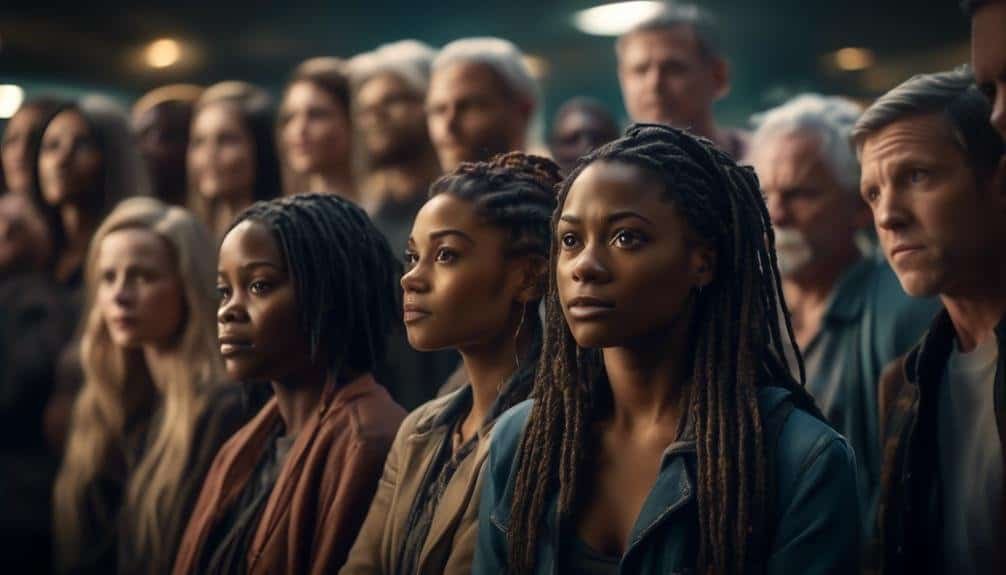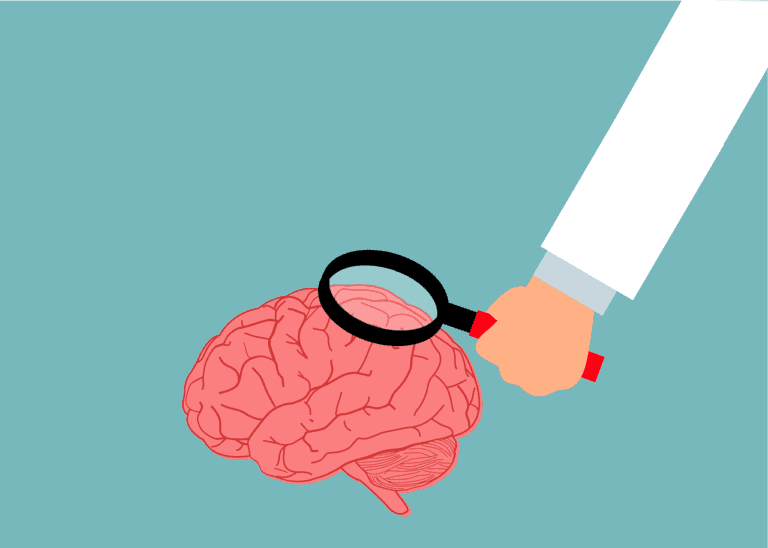Neurodiversity in Literature and Media
The portrayal of neurodiverse characters in literature and media has garnered increasing attention in recent years, prompting important discussions about authentic representation and the impact of such portrayals on society.
From the pages of novels to the screens of film and television, the presence of characters with diverse neurological experiences has the potential to challenge stereotypes, foster empathy, and broaden our understanding of human diversity.
However, the journey towards accurate and respectful representation is not without its complexities, and navigating the nuances of neurodiversity in storytelling requires a delicate balance of creativity, sensitivity, and responsibility.
As we navigate this landscape, it becomes increasingly clear that the inclusion of neurodiverse voices in literature and media holds the power to reshape narratives, challenge norms, and ultimately foster a more inclusive and empathetic society.
Key Takeaways
- Neurodiverse characters in literature and film have evolved from stereotypes to complex individuals with depth and unique personalities.
- Authentic portrayals of neurodiverse characters in media influence public attitudes towards individuals with neurodiverse conditions, fostering empathy, awareness, and acceptance.
- The representation of varied experiences in film plays a crucial role in challenging stereotypes, humanizing neurodiverse individuals, and shaping societal perceptions.
- Neurodiverse authors and creators bring unique perspectives and experiences to literature and media, contributing to more authentic and diverse narratives and empowering neurodiverse individuals to share their stories and perspectives.
Neurodiverse Characters in Literature
The portrayal of neurodiverse characters in literature has evolved to reflect a more nuanced and authentic representation of diverse neurological experiences. Character development in neurodiverse representation has shifted from one-dimensional stereotypes to multifaceted individuals with depth and complexity. Authors are increasingly weaving neurodiversity into their narratives, offering readers a richer understanding of varied cognitive and neurological conditions.
Character development plays a pivotal role in fostering accurate neurodiverse representation. Authors are now prioritizing the depiction of neurodiverse characters as fully realized individuals with unique personalities, rather than reducing them to a mere collection of symptoms. This shift allows for a more authentic exploration of their experiences, challenges, and triumphs. By delving into the intricacies of their lives, authors can challenge misconceptions and foster empathy among readers.
Furthermore, the inclusion of neurodiverse characters in literature contributes to a more inclusive literary landscape, broadening the representation of diverse experiences and perspectives.
Impact of Neurodiversity in Film
The impact of neurodiversity in film is far-reaching, with authentic portrayals serving as a crucial step in representing the diverse experiences of individuals with neurodiverse conditions.
Through film, the representation of varied experiences can significantly contribute to changing societal perceptions and fostering greater understanding and acceptance.
Authentic Portrayals of Neurodiversity
Prominently featured in film, neurodiversity is depicted with varying degrees of authenticity and impact, shaping societal perceptions and understanding.
Authentic portrayals of neurodiversity in media portrayal can significantly influence public attitudes towards individuals with neurodiverse conditions. When neurodiversity representation in films is accurately depicted, it can foster empathy, awareness, and acceptance.
However, inaccurate or stereotypical portrayals can perpetuate harmful misconceptions and stigmas, ultimately hindering progress towards inclusivity. Therefore, it is crucial for filmmakers and media creators to consult with neurodiverse individuals and advocates to ensure that their portrayals are respectful and true to lived experiences.
Authentic representations not only validate the diverse experiences within the neurodiverse community but also contribute to a more inclusive and compassionate society. Consequently, the impact of neurodiversity in film is undeniable, making it imperative to prioritize authentic portrayals in media.
Representation of Varied Experiences
Depicting neurodiversity with authenticity and impact in film significantly influences public attitudes towards individuals with neurodiverse conditions. The representation of varied experiences plays a crucial role in shaping societal perceptions and fostering empathy and acceptance.
In the realm of neurodiversity representation, it is imperative for film to encompass diverse experiences across the spectrum. By showcasing a range of neurodiverse characters and their unique journeys, films can dismantle stereotypes and highlight the multifaceted nature of neurodiversity.
Through authentic storytelling and nuanced character portrayals, films have the power to humanize neurodiverse individuals. They offer audiences a deeper understanding of their challenges, strengths, and contributions to society.
This nuanced representation not only fosters empathy and acceptance but also empowers neurodiverse individuals. By providing them with relatable and affirming on-screen role models, films can help them feel seen and understood.
Changing Societal Perceptions
Portraying neurodiversity in film has the potential to profoundly influence societal perceptions and foster greater understanding and acceptance of individuals with neurodiverse conditions. By depicting neurodiverse characters in a variety of roles and storylines, film has the power to challenge stereotypes and misconceptions, ultimately changing attitudes towards neurodiversity. When audiences see neurodiverse characters portrayed as fully developed individuals with unique strengths and challenges, it can lead to greater societal inclusion and empathy. The impact of such portrayals extends beyond the screen, influencing real-world interactions and shaping how neurodiverse individuals are perceived and treated in everyday life. The table below illustrates some impactful films that have contributed to changing societal perceptions of neurodiversity in recent years.
| Film Title | Description |
|---|---|
| "Rain Man" | Showed the capabilities and challenges of a character with autism. |
| "Temple Grandin" | Highlighted the achievements of a character with autism and how different thinking can lead to success. |
| "A Beautiful Mind" | Explored the life of a character with schizophrenia, challenging stigmas and stereotypes. |
Neurodiverse Authors and Creators
The inclusion of neurodiverse authors and creators in literature and media has brought forth a multitude of perspectives that were previously underrepresented. Their unique insights and experiences have greatly impacted storytelling, leading to more authentic and diverse narratives.
Furthermore, the representation of neurodiverse characters in their work has contributed to a more inclusive and nuanced portrayal of individuals with neurodiverse traits.
Neurodiverse Voices in Media
Neurodiverse authors and creators bring unique perspectives and experiences to the literary and media landscape, enriching the diversity of voices and narratives available to audiences. Their contributions play a crucial role in enhancing media representation and broadening the understanding of neurodiverse voices.
Some significant aspects to consider in this context include:
- Authentic portrayals of neurodiverse characters and experiences
- Challenging stereotypes and misconceptions surrounding neurodiversity
- Exploring the intersectionality of neurodiversity with other identities
- Increasing visibility and awareness of neurodiverse voices in mainstream media
- Empowering neurodiverse individuals to share their stories and perspectives through various media platforms
These elements collectively contribute to a more inclusive and representative media landscape that reflects the rich diversity of human experiences.
Impact on Storytelling
The contributions of neurodiverse authors and creators in the literary and media landscape significantly influence storytelling by offering unique perspectives and enriching the diversity of voices and narratives available to audiences.
Neurodiverse individuals often bring a distinct and innovative approach to creativity, leading to a profound impact on the storytelling process. Their different cognitive styles and experiences can result in narratives that challenge traditional storytelling norms, leading to more inclusive and authentic representations of diverse characters and experiences.
By infusing their work with personal insights and perceptions, neurodiverse authors and creators contribute to the creation of more inclusive storytelling that resonates with a broader audience.
This impact on creativity not only enriches the literary and media landscape but also fosters a greater understanding and appreciation of neurodiverse perspectives.
Representation in Characters
With their unique perspectives and lived experiences, neurodiverse authors and creators bring a refreshing authenticity to the characters they portray in literature and media, enriching the representation of diverse neurodiverse individuals.
- Authentic portrayal of neurodiverse characters allows for greater empathy and understanding among audiences.
- Diverse perspectives in character development challenge stereotypes and misconceptions about neurodiverse individuals.
Neurodiverse authors and creators infuse depth and complexity into their characters, reflecting the multifaceted nature of neurodiversity.
- Representation of neurodiverse characters by neurodiverse creators fosters a sense of inclusivity and belonging for neurodiverse individuals in the audience.
- Through their storytelling, neurodiverse authors and creators promote acceptance and celebration of neurodiversity, contributing to a more inclusive literary and media landscape.
Challenges in Representing Neurodiversity
Successfully capturing the complexity of neurodiverse experiences in literature and media poses considerable challenges for creators and storytellers. One of the primary representation challenges is the prevalence of media stereotypes, which often depict neurodiverse individuals in a narrow and stigmatizing light. These stereotypes can perpetuate misconceptions and hinder authentic portrayals of neurodiversity. Additionally, creators face the daunting task of accurately representing the diverse range of neurodiverse experiences, including but not limited to autism, ADHD, dyslexia, and bipolar disorder, without oversimplifying or homogenizing these conditions.
| Representation Challenges | Solutions |
|---|---|
| Media stereotypes | Diverse and authentic portrayals |
| Oversimplification | Collaborating with neurodiverse individuals |
| Homogenization | Educating creators and storytellers |
| Lack of authentic voices | Amplifying neurodiverse voices |
| Stigmatization | Challenging stereotypes through storytelling |
To address these challenges, creators can collaborate with neurodiverse individuals to ensure authentic representation, educate themselves on the nuanced experiences of neurodiversity, and actively work to challenge existing stereotypes through storytelling. By doing so, literature and media can become powerful tools for fostering understanding and acceptance of neurodiversity.
Importance of Authentic Portrayals
Authentic portrayals of neurodiverse experiences in literature and media are essential for dismantling misconceptions and fostering genuine understanding and acceptance. Authentic representation allows individuals with neurodiverse conditions to see themselves reflected accurately in the stories they consume, promoting a sense of validation and belonging. Inclusive storytelling not only enriches the cultural landscape by showcasing diverse perspectives but also educates the wider audience about the multifaceted nature of neurodiversity. It is through authentic portrayals that the stigma surrounding neurodiverse conditions can be challenged, leading to increased empathy and support for individuals within these communities.
- Empowerment: Authentic portrayals empower individuals with neurodiverse conditions by validating their experiences and fostering a sense of pride in their identity.
- Education: Inclusive storytelling educates the general public about the nuances of neurodiversity, dispelling myths and stereotypes.
- Advocacy: Authentic representation in literature and media can serve as a powerful tool for advocacy, driving social and policy changes for the benefit of neurodiverse individuals.
- Community Building: By depicting diverse neurodiverse experiences, inclusive storytelling helps in building a sense of community and solidarity among individuals with similar conditions.
- Cultural Enrichment: Embracing authentic portrayals of neurodiverse experiences enriches the cultural landscape by offering a more comprehensive and accurate representation of human diversity.
Promoting Understanding and Acceptance
Promoting genuine understanding and acceptance of neurodiverse individuals in literature and media is crucial for fostering inclusivity and empathy in society. By portraying neurodiversity authentically, media and literature can contribute to a more inclusive and empathetic society.
Authentic portrayals of neurodiverse characters and their experiences can help foster understanding and empathy among audiences. When neurodiverse individuals are depicted with authenticity, it promotes acceptance and inclusion, challenging stereotypes and misconceptions.
Through accurate and respectful representation, literature and media have the power to shape societal attitudes towards neurodiversity, promoting a more inclusive and accepting environment. By showcasing the diversity of human experiences, these mediums can help audiences recognize and appreciate the value that neurodiverse individuals bring to society.
Furthermore, promoting understanding and acceptance through literature and media can contribute to breaking down barriers and creating a more inclusive and empathetic society for all individuals, regardless of their neurodiverse traits.
Conclusion
In conclusion, neurodiversity in literature and media brings a spectrum of colors to the canvas of storytelling, allowing for a richer and more inclusive representation of human experiences. By weaving the threads of neurodiverse characters, authors, and creators into the fabric of our cultural narratives, we can create a tapestry that reflects the diversity of the human mind.
This mosaic of perspectives promotes empathy, understanding, and acceptance, creating a more vibrant and interconnected world.







